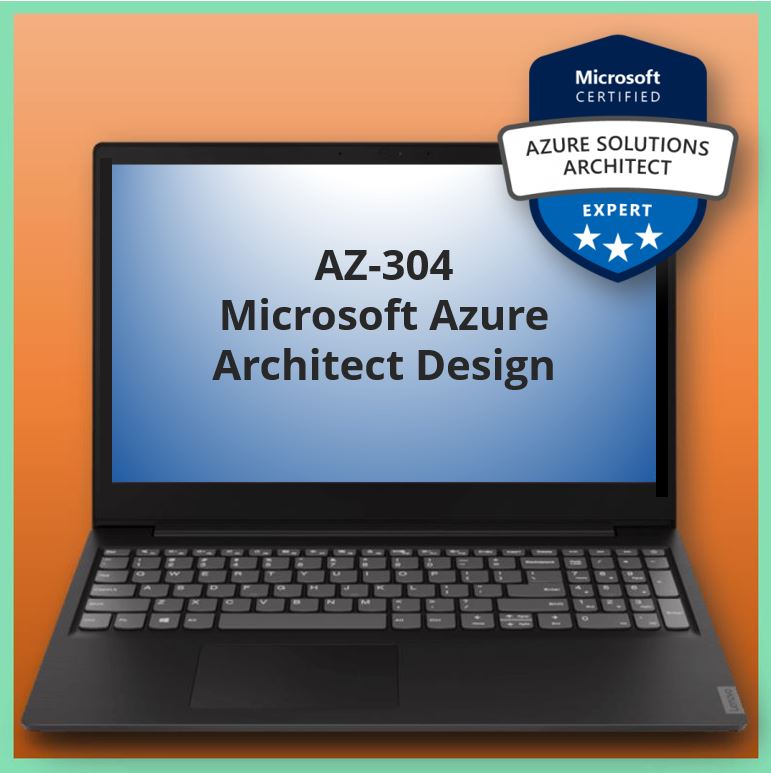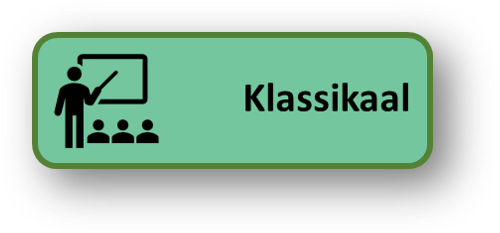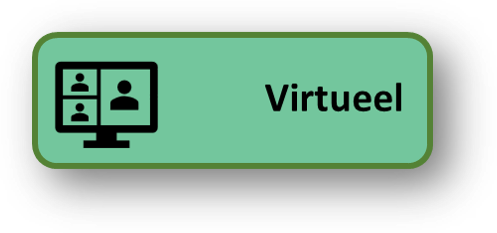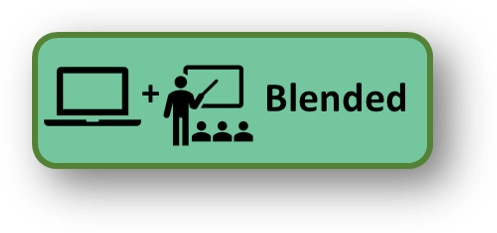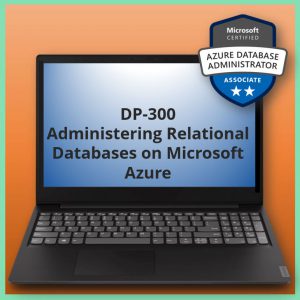Aangeboden leervormen
Microsoft Azure Architect Design - AZ-304
This course teaches Solutions Architects how to translate business requirements into secure, scalable, and reliable solutions. Lessons include design considerations related to logging, cost analysis, authentication and authorization, governance, security, storage, high availability, and migration. This role requires decisions in multiple areas that affect an overall design solution.

FILMPJE
Voor wie
This course teaches Solutions Architects how to translate business requirements into secure, scalable, and reliable solutions. Lessons include design considerations related to logging, cost analysis, authentication and authorization, governance, security, storage, high availability, and migration. This role requires decisions in multiple areas that affect an overall design solution.
Programma
Voor de omschrijving van e-learning klikt u hier
Module 1: Design for Cost Optimization
In this module, you will learn how to optimize costs from recommendations, breakdown costs by Azure Service, and download and review usage details. 01-View
Lessons
Recommend Solutions for Cost Management
Recommended Viewpoints for Minimizing Costs
After completing this module, students will be able to:
Optimize with Azure Cost Management.
Design with Cost in mind
Optimize Costs from recommendations
Module 2: Design a Solution for Logging and Monitoring
In this module, you will learn about Azure Monitor, Azure Application Insights, and Azure Sentinel. You will be able to monitor Azure Resources with Azure Monitor and collect and analyze resource Logs for Azure.
Lessons
Azure Monitoring Services
Azure Monitor
After completing this module, students will be able to:
Monitor Azure resources with Azure Monitor
Collect and analyze Resource Logs for Azure resources
Understand how Azure Sentinel collects data on the devices, users, infrastructure, and applications
Module 3: Design Authentication
In this module, you will learn to implement Conditional Access and Azure Multi-Factor Authentication and also be able to recommend an Authentication Methodology for Hybrid Identity.
Lessons
Recommend a Solution for Multi-Factor Authentication
Recommend a Solution for Single-Sign On (SSO)
Five Steps for Securing Identity Infrastructure
Recommend a Solution for a Hybrid Identity
Recommend a Solution for B2B Integration
After completing this module, students will be able to:
Plan for a MFA Deployment
Understand Azure Active Directory Seamless Single Sign-On (SSO)
Recommend an Authentication Methodology for Hybrid Identity
Integrate with Identity Providers
Module 4: Design Authorization
In this module, you will learn how to provide Identities to services and understand the hierarchy of Management Groups and Subscriptions.
Lessons
Infrastructure Protection
Recommend a Hierarchical Structure for Management Groups, Subscriptions and Resource Groups
After completing this module, students will be able to:
Recommend hierarchy of Management Groups and Subscriptions.
Configure custom RBAC Role definitions and assignments
Module 5: Design Governance
In this module, you will learn apply an Azure Policy, Identify non-compliant resources, and manage tag governance with Azure Policy.
Lessons
Recommend a Solution for using Azure Policy
Recommend a Solution for using Azure Blueprint
After completing this module, students will be able to:
Organize Policies with Initiatives
Manage Tag Governance with Azure Policy
Provide guidance on Azure Blueprints
Module 6: Design Security for Applications
In this module, you will understand Azure Key Vault availability and redundancy, managed Identities for Azure resources. Also, learn about system-assigned Managed Identity and Azure VMs.
Lessons
Recommend a Solution using KeyVault
Recommend a Solution using Azure AD Managed Identities
After completing this module, students will be able to:
Understand Key Vault authentication and authorization
Understan Azure Key Vault availability and redundancy
Understand how Blueprints differ from Resource Manager Templates and Azure Policy
Module 7: Design a Solution for Databases
In this module, you will be able to recommend the appropriate data store and recommend Azure SQL Database and Azure SQL Managed Instance Service tiers.
Lessons
Select an Appropriate Data Platform Based on Requirements
Overview of Azure Data Storage
Recommend Database Service Tier Sizing
Dynamically Scale Azure SQL Database and Azure SQL Managed Instances
Recommend a Solution for Encrypting Data at Rest, Transmission, and In Use
After completing this module, students will be able to:
Recommend Database Service Tier Sizing
Recommend a Solution for Encrypting Data at Rest, Transmission, and In Use
Understand Azure Data Lake Store and Azure Blob Storage containers
Module 8: Design Data Integration
In this module, you will learn about data flows using Azure Data Factory and Azure Synapse Analytics architecture.
Lessons
Recommend a Data Flow
Recommend a Solution for Data Integration
After completing this module, students will be able to:
Implement Azure Synapse Analytics
Describe how data flows using Azure Data Factory
Demonstrate hjow to use Azure Data Factory to load data into SQL Data Warehouse
Module 9: Select an Appropriate Storage Account
In this module, you will learn about recommend a design a strategy for using tiered storage and manage tiered Storage using Azure tools.
Lessons
Understanding Storage Tiers
Recommend a Storage Access Solution
Recommend Storage Management Tools
After completing this module, students will be able to:
Recommend tools for working with Azure Storage
Design for Azure Blob Storage access tiers
Module 10: Design a Solution for Backup and Recovery
In this module, you will learn about solutions for site recovery capacity and site failover and failback. You will be able to recommend solutions for recovery in different regions.
Lessons
Recommend a Recovery Solution for Hybrid and On-Premises Workloads
Design and Azure Site Recovery Solution
Recommend a Solution for Recovery in Different Regions
Recommend a Solution for Azure Backup Management
Design a Solution for Data Archiving and Retention
After completing this module, students will be able to:
Recommend solutions for Azure hybrid and on-premises workloads that meets recovery objectives
Recommend a solution for site recovery capacity
Recommend storage types and methodology for data archiving
Identify requirements for data archiving
Module 11: Design for High Availability
In this module, you will learn about solutions for application and workload redundancy, including compute, database, and storage.
Lessons
Recommend a Solution for Application and Workload Redundancy
Recommend a Solution for Autoscaling
Identify Resources that Require High Availability
Identify Storage Tpes for High Availability
Recommend a Solution for Geo-Redundancy of Workloads
After completing this module, students will be able to:
Recommend a solutions for autoscaling
Identify storage types for high availability
Recommend a solutions for geo-redundancy of workloads
Module 12: Design a Compute Solution
In this module, you will learn about the appropriate compute technologies, including virtual machines, App Services, Service Fabric, Azure Functions, Windows Virtual Desktop, and containers.
Lessons
Recommend a Solution for Compute Provisioning
Determine Appropriate Compute Technologies
Recommend a Solution for Containers
Recommend a Solution for Automating Compute Management
After completing this module, students will be able to:
Refer solution for automating compute management
Recommend the appropriate compute technologies, including virtual machines, and App Services
Recommend the approrioate AKS and ACI and the configurations
Module 13: Design a Network Solution
In this module, you will learn about solutions for network addressing and name resolution, network provisioning, and network security.
Lessons
Recommend a Solution for Network Addressing and Name Resolution
Recommend a Solution for Network Provisioning
Recommend a Solution for Network Security
Recommend a Solution for iInternete Connectivity and On-Premises Networks,
Recommend a Solution for Automating Network Management
Recommend a Solution for Load Balancing and Rraffic Routing
After completing this module, students will understand :
Solutions for network addressing and name resolution
Solutions for network security including private endpoints, firewalls, and gateways
Recommendations for network connectivity to the Internet, on-premises networks, and other VNets.
Recommendations for load balancing and traffic routing
Module 14: Design an Application Architecture
In this module, you will learn about solution for deployment of applications including ARM templates, Logic Apps, or Azure Functions. You will also learn about microservices architecture including Event Grid, Event Hubs, Service Bus, Storage Queues, Logic Apps, Azure Functions, and webhooks.
Lessons
Recommend a Microservices Architecture
Recommend an Orchestration Solution for Deployment of Applications
Recommend a Solution for API Integration
After completing this module, students will be able to:
Recommend deployment solutions using ARM templates, Logic Apps, or Azure Functions
Recommend a solution for monitoring automation
Recommend a hosting structure for API management
Module 15: Design Migrations
In this module, you will learn about recommend a solution for migrating applications and VMs and a solution for migration of databases.
Lessons
Assess and On-Premises Servers and Applications for Migration
Recommend a Solution for Migrating Applications and VMs
Recommend a Solution for Migration of Databases
After completing this module, students will be able to:
Assess on-premises servers and applications for migration
Suggest solutions for migrating applications and VMs
Determine migration scope, including redundant, related, trivial, and outdated data
Voorkennis
Successful Azure Solution Architects start this role with experience on operating systems, virtualization, cloud infrastructure, storage structures, and networking.
• Understanding of on-premises virtualization technologies, including: VMs, virtual networking, and virtual hard disks.
• Understanding of network configuration, including TCP/IP, Domain Name System (DNS), virtual private networks (VPNs), firewalls, and encryption technologies.
• Understanding of Active Directory concepts, including domains, forests, domain controllers, replication, Kerberos protocol, and Lightweight Directory Access Protocol (LDAP).
• Understanding of resilience and disaster recovery, including backup and restore operations.
Examen
MICROSOFT AZ-304
Direct naar examen: MICROSOFT AZ-304
Certificering:
Klik voor meer info over Azure certificering


